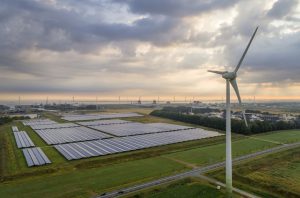Coronavirus shutdowns have made for a grim global outlook this year, but the IMF said Wednesday if things go right, the recovery could come sooner than projected in their main forecast.
The situation could also deteriorate beyond the tough figures given given in the World Economic Outlook, which project a global contraction of 4.9%, followed by a recovery of 5.4% in 2021.
The report acknowledged the high levels of uncertainty around the forecast, but also offered two alternative scenarios, one of which allows for the possibility the downturn might not be quite as terrible.
At the time of the April forecast, IMF chief economist Gita Gopinath said her team “very strongly felt that the uncertainty was predominantly on the downside. This time round, we have both an upside risk, and a downside scenario.”
There is “the upside possibility that you might have better news on treatments and vaccines and, you know, economies can recover much faster,” she said in an interview.
But she cautioned “the downside risks are also quite severe.”
A second outbreak
One possibility is a second major outbreak takes place in early 2021, with new measures imposed to contain the spread that would be less disruptive than those used this year.
But even with additional fiscal support from governments, “the outbreak is assumed to cause further longer-lived damage to the supply side of economies (scarring) starting in 2022, as increased bankruptcies lead to capital destruction, temporary slowing in productivity growth and a temporary increase in trend unemployment.”
In that case, the global economy would see growth of just 0.5% in 2021.
A faster recovery
The other possibility is that the recovery is faster than forecast, as effective containment of the virus leads to “less precautionary behaviour by households and firms once the lockdowns are lifted.”
It also assumes governments continue the spending measures to support businesses and households with “no partial rollback in response to the improved outlook.”
That would mean a smaller downturn in 2020 of 4.5%, and a faster recovery next year, with 8.4% global growth.
In an interview with AFP, Gopinath was asked if she was concerned about the signs of a backlash against globalisation.
Anti-globalisation backlash exacerbated
“Even before this crisis hit, we saw a serious questioning of globalisation and its benefits. And we also saw rising trade tensions. Now this crisis has probably exacerbated some of that,” she said.
“It’s very important for countries to work together, and we have been calling explicitly for not putting export restrictions on, for instance, medical supplies and medical goods, because this is the time when the world as a whole needs it. They have to be collaborative and have to work together.
“The system is not perfect, the multilateral trading system needs improvement and countries should work together to improve that… Going backwards, and moving your production inwards is not a good strategy for growth and not a good strategy for alleviating poverty around the world.”
Asked about the best strategy for governments to avoid long-term damage to their economies, she said: “This crisis has been different in terms of policy response compared to the Great Recession. The support has been fast, it’s been substantial, it’s been targeted and that has absolutely helped, and I believe policymakers have the appetite to do whatever it takes.
‘Policymakers will need to adapt’
“If we didn’t do that at this point, we will be setting ourselves up for a much worse recovery. But going forward, it’ll have to be that you have to build a job-rich recovery for the global economy. Some of it will require providing hiring subsidies to firms to be able to hire those people who otherwise would be long-term unemployed. Our view is that policymakers will need to adapt as the situation evolves. You cannot withdraw support too quickly. More will likely be needed, because this crisis is not over and it’s going forward.”
Asked about prospects for the United States given reports of a resurgence of the coronavirus, she said: “The biggest hit is going to be in the second quarter, and after that we expect to see recoveries. We’ve already seen some recovery is taking place in some sectors, though it’s highly uneven, and we expect the recovery to be gradual. So, even by the end of 2021, our projection is for the level of GDP to be below what it was in 2019.
“In our baseline, we have allowed for the fact that there will be a possible increase in the number of cases, but not a second big wave. If that were to happen, and that would be true for any country in the world, that would be a major risk.
“The US has done substantial and unprecedented support and this has come both from fiscal policy and monetary policy, so they’ve done a lot. And that has been very helpful. This has succeeded in helping people with their livelihoods and also preventing wide-scale bankruptcies. So both of those should absolutely help with the recovery going forward.”
AFP
























